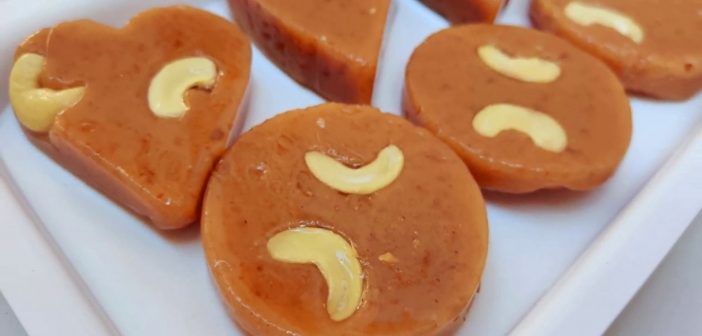Karachi Halwa, a melt-in-your-mouth confection with a rich history, transcends its name to hold a cherished place in the hearts (and stomachs) of many Indians. While its origins lie in the bustling city of Karachi, Pakistan, this delectable sweet has carved a unique niche in the Indian dessert landscape, captivating taste buds and weaving itself into the cultural fabric. This article delves into the fascinating story of Karachi Halwa in India, exploring its makers, taste profile, historical roots, cultural significance, and religious associations.
Makers and Methods: A Legacy of Expertise
The creation of Karachi Halwa is an art form passed down through generations of skilled artisans, primarily concentrated in the northern Indian state of Uttar Pradesh. The city of Agra, famed for the Taj Mahal, is particularly renowned for its halwa makers, who have perfected the art over centuries. These artisans, known as “halwais,” meticulously prepare the sweet using traditional methods and high-quality ingredients.
The base of Karachi Halwa is typically a combination of semolina (sooji), ghee (clarified butter), sugar, and water. However, the magic lies in the subtle variations each halwai incorporates. Some may add a touch of milk powder for a creamier texture, while others might infuse the halwa with cardamom or saffron for an aromatic depth. The cooking process involves constant stirring and careful temperature control to achieve the signature soft, flaky texture. Nuts like pistachios, almonds, and cashews are often added for a delightful textural contrast and visual appeal.
A Symphony of Flavors: A Sweet Treat for Every Palate
Karachi Halwa boasts a unique taste profile that sets it apart from other Indian sweets. The dominant sweetness comes from the sugar, perfectly balanced by the rich, nutty flavor of the ghee. The subtle grainy texture of the semolina adds a delightful bite, while the optional spices like cardamom and saffron lend a touch of warmth and complexity. The overall experience is one of pure indulgence, with the halwa melting smoothly on the tongue, leaving a lingering sweetness and a sense of pure satisfaction.
A Historical Journey: From Sindh to India
The exact origin of Karachi Halwa remains shrouded in some mystery. Theories suggest that the sweet originated in the Sindh province of Pakistan, which was historically part of undivided India. The name “Karachi Halwa” likely reflects its association with the bustling port city of Karachi. With the partition of India in 1947, the migration of skilled halwais from Sindh to various regions of India, particularly Uttar Pradesh, is believed to have played a crucial role in introducing and popularizing the sweet within the country.
Cultural Significance: A Sweet Symbol of Celebration
Karachi Halwa has transcended its origins to become an integral part of Indian culture. Its vibrant colors and rich texture make it a visually appealing addition to any festive occasion. It is often served during religious holidays like Diwali, Eid, and Holi, gracing festive platters and adding a touch of sweetness to celebrations. The halwa also finds a place in social gatherings and weddings, symbolizing joy, prosperity, and the sharing of happiness.
Religious Connections: Offerings and Blessings
Karachi Halwa holds a special significance in some religious practices in India. During Hindu festivals like Ganesh Chaturthi and Navratri, the sweet is offered as prasad (a sanctified offering) to deities, seeking blessings and good fortune. Its rich texture and vibrant color are believed to be symbolic of auspiciousness and divine favor.
Beyond Borders: A Legacy Shared
While Karachi Halwa may have originated in present-day Pakistan, its legacy transcends geographical boundaries. It is cherished and enjoyed by communities of Indian origin across the globe, serving as a sweet reminder of their cultural heritage. The shared love for this delectable treat bridges borders and fosters a sense of connection within the Indian diaspora.
Modern Adaptations: A Sweet Evolution
The popularity of Karachi Halwa has led to innovative variations. While the traditional recipe remains a cherished secret by skilled halwais, modern adaptations cater to evolving preferences. Flavors like chocolate, rose, and mango have been incorporated, creating an exciting fusion of tradition and modernity. Additionally, bite-sized versions, packaged for convenience, have emerged, making this delightful treat accessible to a wider audience.
Conclusion: A Timeless Treat
Karachi Halwa, with its rich history, unique flavor profile, and cultural significance, embodies the essence of Indian culinary heritage. It is a testament to the skill of generations of halwais and their dedication to preserving a cherished tradition. As the sweet continues to evolve with modern adaptations, its legacy as a symbol of celebration, devotion, and pure indulgence remains firmly rooted in the hearts of Indians across the globe.






